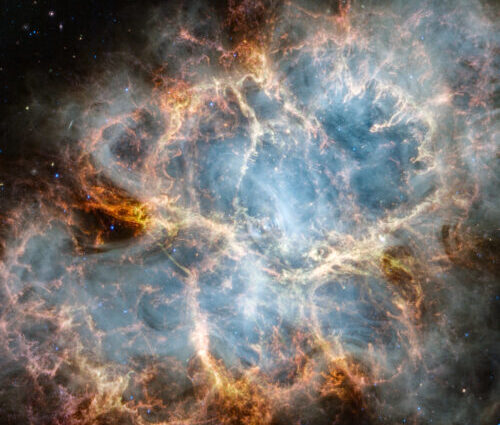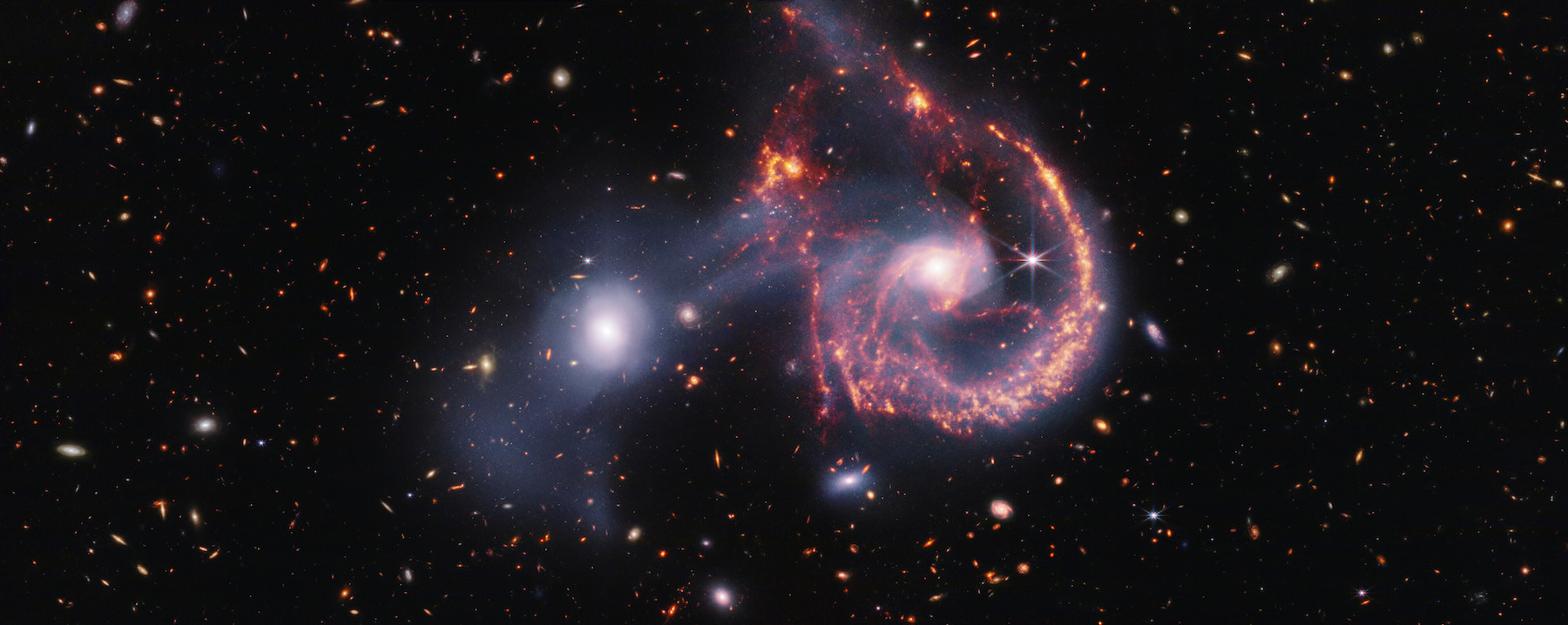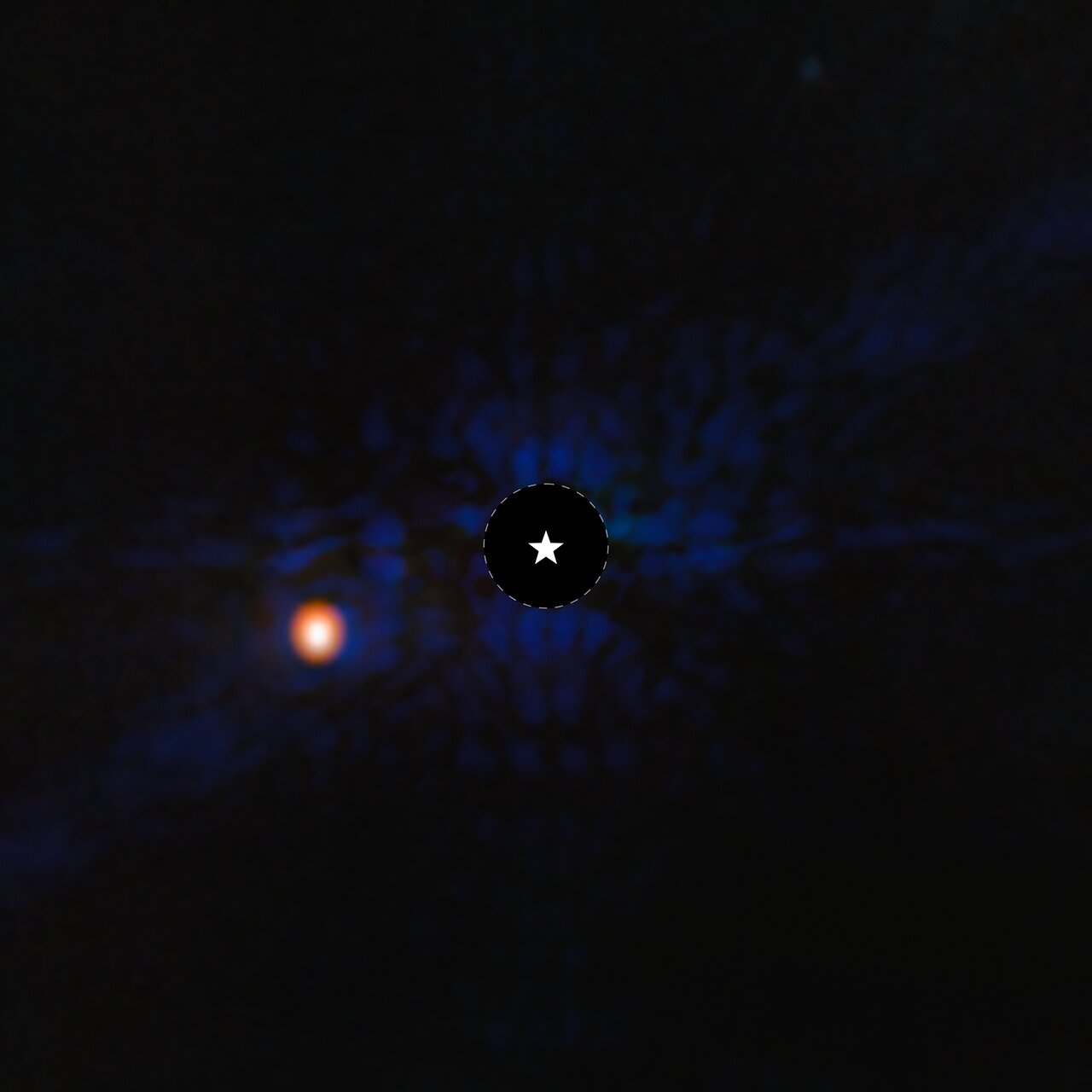This composite image of Arp 107, created with data from two of the James Webb Space Telescope’s infrared instruments, reveals a wealth of information about the star formation taking place in these two galaxies and how they collided hundreds of million years ago.
More than 600 scientists will review the proposals and select the most promising ones for time on Webb. The largest share of proposals would involve observing “high-redshift” galaxies among the first generation of galaxies that formed after the Big Bang. Galaxies this old and distant have their light stretched to longer wavelengths due to the expansion of the Universe. Research involving exoplanet atmospheres and stars and stellar populations were the second- and third-most popular science categories in this cycle.
Webb is a joint project of NASA, the European Space Agency, and the Canadian Space Agency. The observatory’s 21.3-foot (6.5-meter) primary mirror and four infrared instruments, tuned to detect faint thermal energy coming from the cold blackness of space, make it a particularly useful general-purpose research platform. In this cycle, astronomers asked for time on Webb to look at targets within the Solar System, exoplanets in our stellar neighborhood, gas and dust suspended in the space between the stars, supermassive black holes, and nearby galaxies.
This is a remarkable range of scientific targets. Only the Hubble Space Telescope can match the breadth of Webb’s scientific targets, but Webb’s larger mirror allows it to observe objects 100 times fainter than Hubble can see.
This image of the gas-giant exoplanet Epsilon Indi Ab was taken with the coronagraph on the James Webb Space Telescope’s Mid-Infrared Instrument A star symbol marks the location of the host star Epsilon Indi A, whose light has been blocked by the coronagraph.
Credit:
ESA/Webb, NASA, CSA, STScI, E. Matthews (Max Planck Institute for Astronomy)
This image of the gas-giant exoplanet Epsilon Indi Ab was taken with the coronagraph on the James Webb Space Telescope’s Mid-Infrared Instrument A star symbol marks the location of the host star Epsilon Indi A, whose light has been blocked by the coronagraph.
Credit:
ESA/Webb, NASA, CSA, STScI, E. Matthews (Max Planck Institute for Astronomy)
In less than two-and-a-half years of science operations, Webb has only teased astronomers of its potential productivity. There is a high probability that Webb will see galaxies even older and more distant than the faint red beacon announced in May. There are thousands more known exoplanets for Webb to study, worlds of all sizes in our own Solar System, and unspeakable grandeur Webb will assuredly reveal in the years ahead.
It seems astronomers have no shortage of ideas about where to look. Maybe one day, new super heavy-lift rockets or advancements in in-space assembly will make it possible to deploy space telescopes even more sensitive than Webb. Until then, we can be thankful that Webb is performing well and has a good shot of far outliving its original five-year design life. Let’s continue enjoying the show.



